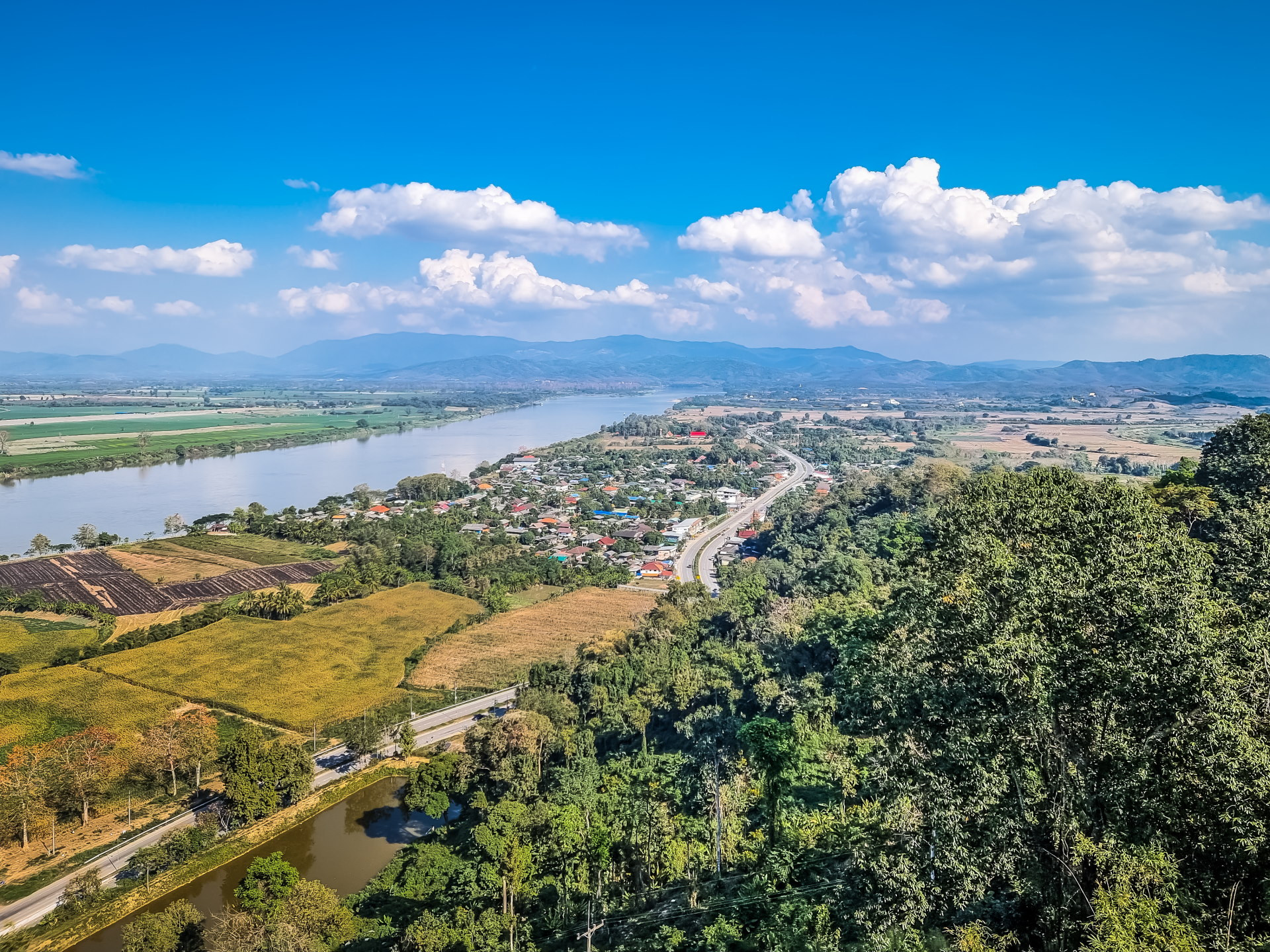️
Exploring Thailand also means juggling its regions.
From the mountains of the north to the beaches of the south, the central plains, and the plateaus of Isaan, each region has its own character, climate, rhythm, and even gastronomy. Understanding this regional division can really help refine your itinerary, depending on the seasons... and your travel desires.
For clarity, I rely here on a division into five large regions, the most used in tourist guides and maps, even if it can sometimes differ from administrative or meteorological classifications.
Index
Centre → Around Bangkok: plains, historic park, nearby beaches. A diverse region, easily accessible from the capital.
North part → Mountainous region with a strong cultural identity and lush green landscapes. Perfect for temples, markets, and tranquility.
Northeast (Issan) → One of the most rural regions. Authentic, welcoming, and still relatively untouristy.
East → Outside of Pattaya and its surrounding areas, the east remains relatively untouristy. This is also where the islands of Ko Chang, Ko Mak, and Ko Kut are located.
South → Most touristy region: lush jungle, beautiful beaches and paradise islands.
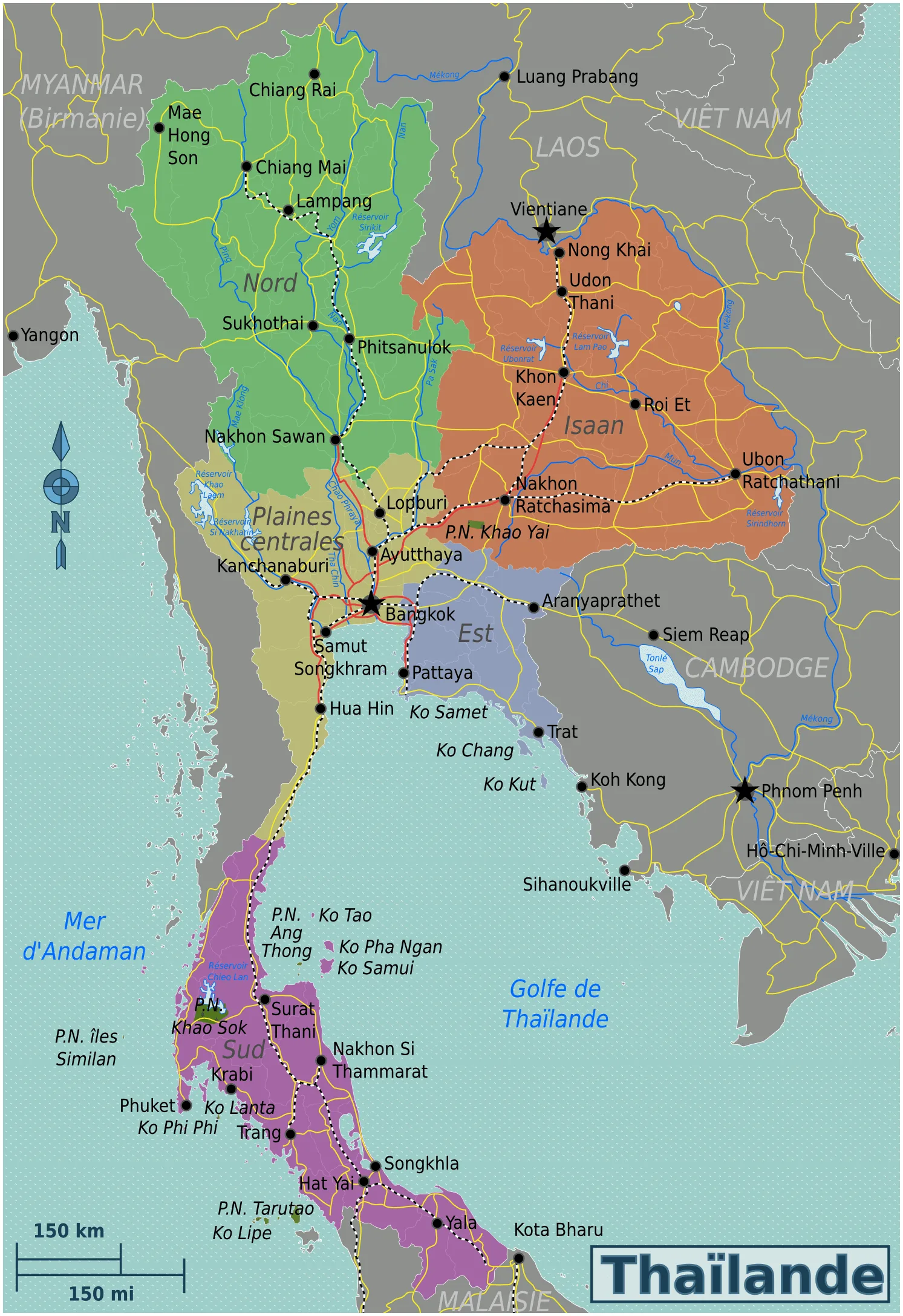
Thailand at a glance
Not sure where to start?
This page gives you an overview of the main regions and destinations in Thailand, each with a brief description and its strong points. All of this is supplemented with useful links to dig a little deeper.
The idea here is to outline Thailand's highlights, must-sees, and favorites to help you plan your future itinerary. It can also pique your interest in discovering what each corner of the country has to offer.
Think of this as a kind of quick index of my site to get to the essentials
Centre Region
Considered the historical and political heart of Thailand, this region combines royal temples, ancient ruins, mountains, jungles and even a bit of sea. In short, it is a complete region that allows you to see many different facets of the country without straying far from Bangkok, a lively and unmissable capital.
From this arrival point, you can make excursions to several ancient royal cities such as Ayutthaya ou Lopburi, both rich in heritage. To the west, Kanchanaburi offers a backdrop of mountains, waterfalls and jungle, marked by the history of World War II.
And for those who want to see the sea without going down to the South, Hua Hin is a convenient and popular beach resort, easily accessible from Bangkok.

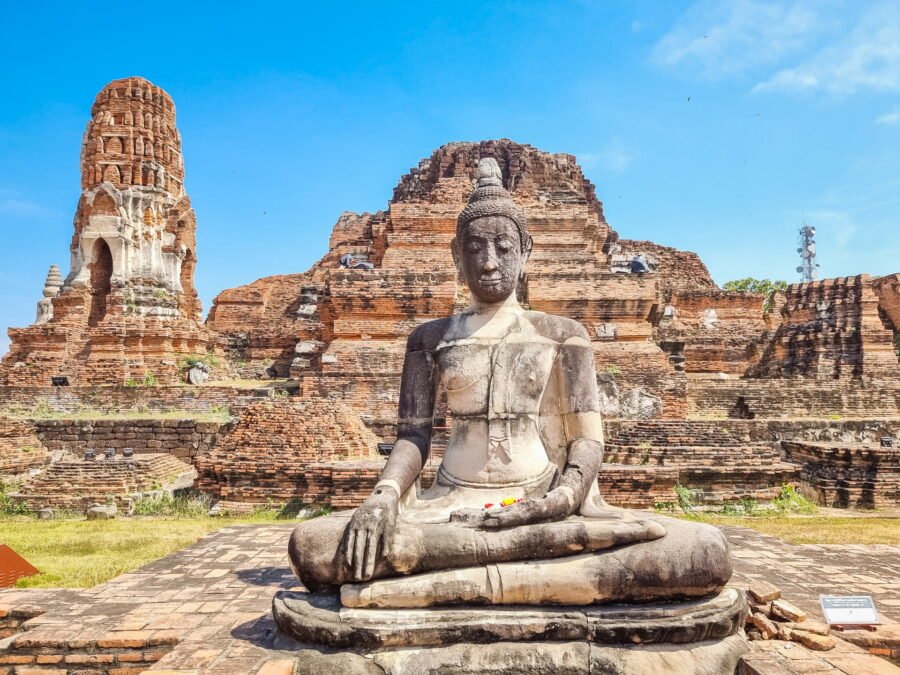

Bangkok
Bangkok in one day: the must-see places to discover
Bangkok in 2 or 3 days: guide to the essentials
7 Bangkok Neighborhoods to Eat and Drink
Kudee Jin: Bangkok's Little-Known Sino-Portuguese Neighborhood
Talat Noi: itinerary to discover an unusual Bangkok on foot
Where to stay in Bangkok: guide to the best neighborhoods
Ayutthaya
Visit the essentials of Ayutthaya in one day
Kanchanaburi
6 must-see visits combining history and nature
Visit to Wat Tham Suea and surroundings
Lopburi
What to see in Lopburi? A historic town… with monkeys
Hua Hin
Hua Hin: a short guide to activities and visits in the surrounding area
Sam Roi Yot National Park: What to see and do
Northern Thailand
With its mountains, forests, local ethnic groups, and cooler atmosphere, the North offers a unique side of Thailand, far from the hustle and bustle of the southern beaches. People come here as much for the culture as for the nature, with a more relaxed pace and a true human richness.
Heir to the old Lanna KingdomThe North is home to several important ancient cities like Sukhothai and Lampang, but also more lively cities like Chiang Mai, considered the cultural capital of the country. Further north, Chiang Rai seduces with its unusual temples and border landscapes. And for curious travelers, the road to Mae Salong or the Mae Hong Son loop offers beautiful discoveries between tea plantations, small villages and mountain roads.
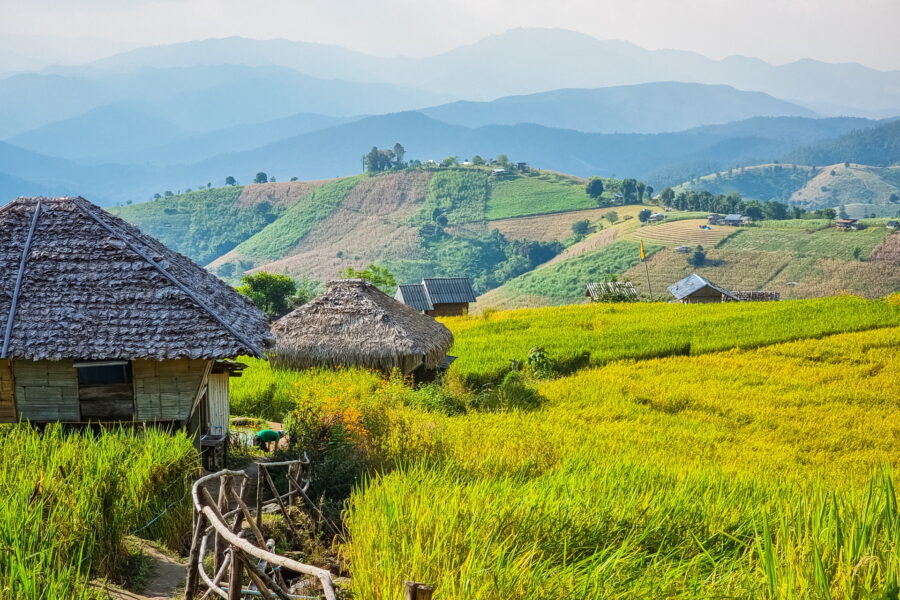
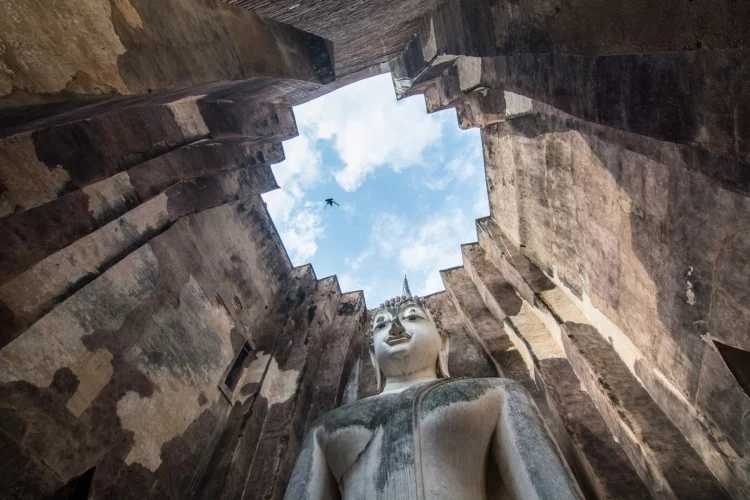
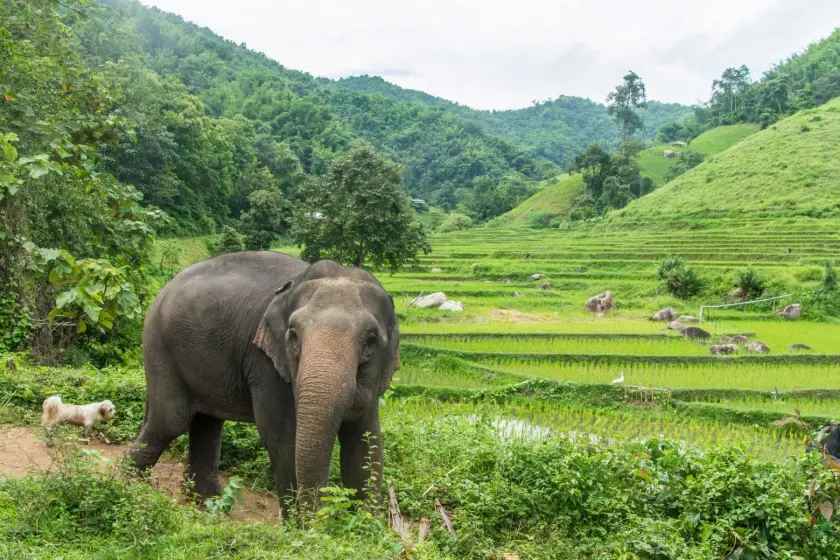
Sukhothai
Sukhothai Historical Park: discovering the most beautiful temples by bike
Si Satchanalai Historical Park, Sukhothai's "little sister"
Lampang
Wat Phra That Lampang Luang: the unmissable temple near Lampang
Lampang: between old charm and tranquility on the road to Chiang Mai
Chiang Mai
In the city
Where to stay in Chiang Mai: guide to the best neighborhoods
Chiang Mai on foot: an itinerary to discover the city differently
Chiang Mai: tips for choosing the right trek
Chiang Mai: 5 temples to discover outside the old city
Around
Doi Inthanon: Complete Guide to Exploring the Roof of Thailand
Ban Pa Pong Piang, the most beautiful rice fields in Thailand
Ob Khan National Park: a little nature getaway in Chiang Mai
Father
Visit Pai: a bohemian stop on the Mae Hong Son loop
Mae Hong Son
Ban Huay Pu Keng: A Padaung Village Off the Beaten Track
Chiang Rai
Wat Rong Khun: the unmissable white temple of Chiang Rai
Chiang Rai: villages and landscape of the Kok River “valley”
Elephant Steps: Unforgettable encounter with elephants in the jungle of Chiang Rai
Chiang Saen: an unmissable stopover in the heart of the Golden Triangle
Doi Tung and Route 1149: Panoramas and Akha coffee in Ban Pha Hi
Mae Salong
Mae Salong: a little piece of China in the heart of the Thai mountains
Northeast (Issan)
Often overlooked by traditional tours, Isaan is nevertheless the country's largest region, and arguably one of the most authentic. Bordering Laos and Cambodia, it stands out for its culture, heavily influenced by these neighbors, its spicy cuisine, and its welcome, which is often warmer than elsewhere.
There are impressive Khmer temples like those of Phimai or Buriram, countryside landscapes, plateaus or rice paddies as far as the eye can see, lively cities like Khon Kaen or Nakhon Ratchasima, and even a large national park easily accessible from Bangkok: Khao Yai. Isaan is a bit like Thailand off the radar… for those who like to get off the beaten track.
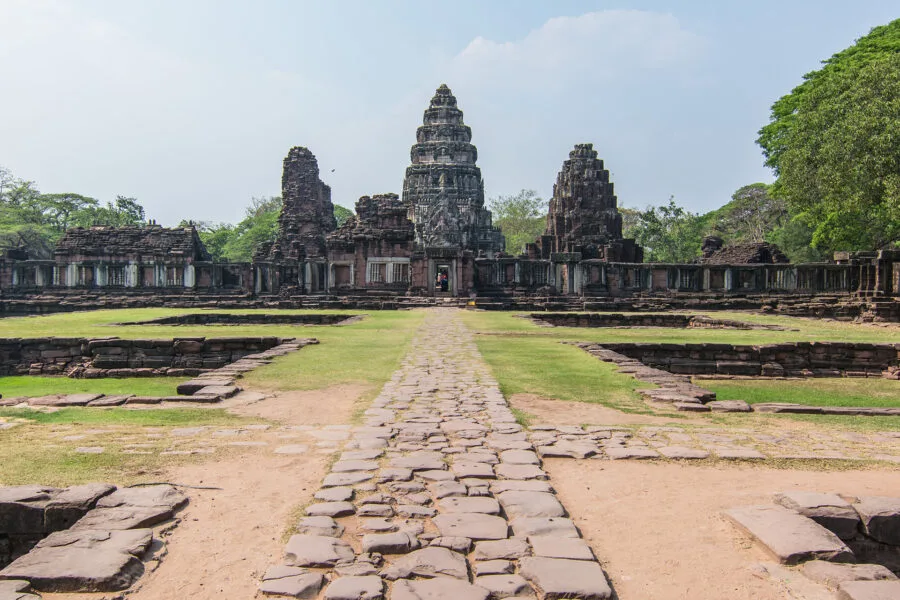
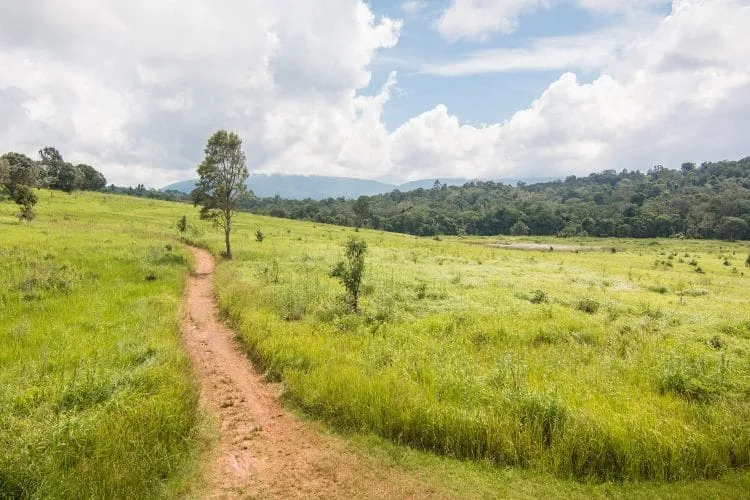
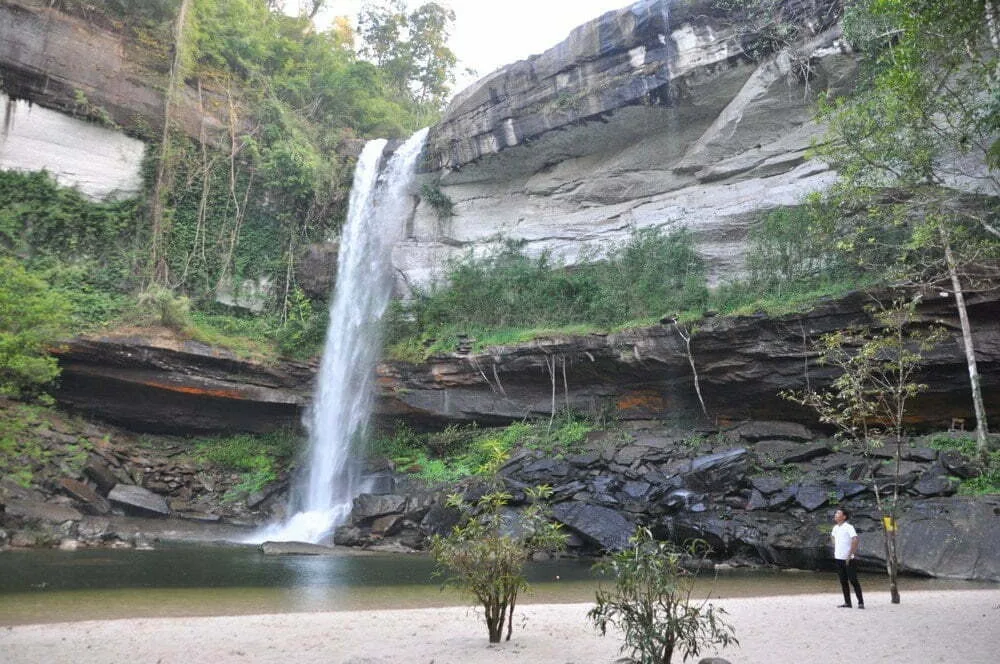
Nakhon Ratchasima (Khorat)
→ Important city, gateway to Isaan, close to Khao Yai National Park.
Khao Yai National Park
Khao Yai National Park: On the trail of wild elephants
Phimai / Buriram
Phimai Temple: A Jewel of Khmer Heritage
Ubon Ratchathani
A day to explore Pha Taem National Park
Ubon Ratchathani: Brief foray into Phu Chong Na Yoi National Park
Mukdahan
Mukdahan: a peaceful stopover on the banks of the Mekong
Nong Khai
→ Small town on the banks of the Mekong, just opposite Laos, relaxed atmosphere and pretty riverside.
Khon Kaen
→ Central city of Isaan, lively, modern, with a large lake in town.
Eastern Thailand
Less frequented than the South as a whole, the East coast nevertheless offers a beautiful seaside alternative, between unspoiled islands, tropical jungle and a more relaxed local atmosphere.
From Trat, a pleasant little transit town, with easy access to the islands such as Ko chang, the most developed, Ko Mak, more peaceful, or Ko Kood, renowned for its still wild beaches.
At the opposite, Pattaya, much more urbanized and festive, remains one of the most visited cities in the country - proof that the region also attracts a completely different public. And for those who prefer to stay on the mainland or a more intimate coast, Chanthaburi is a pleasant town to explore, known for its beautiful cathedral, its old street with old-fashioned dwellings and its gem market.
Eastern Thailand is therefore a surprising mix of very touristy areas and corners that are still largely off the radar.
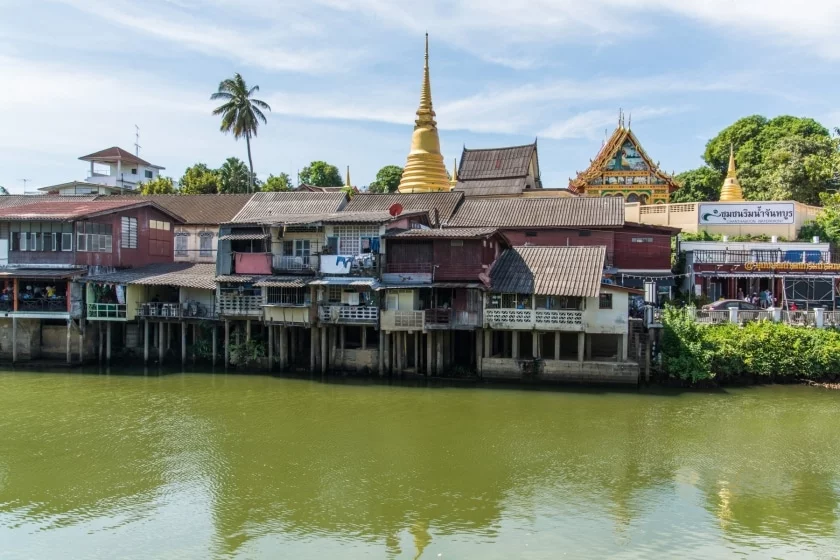
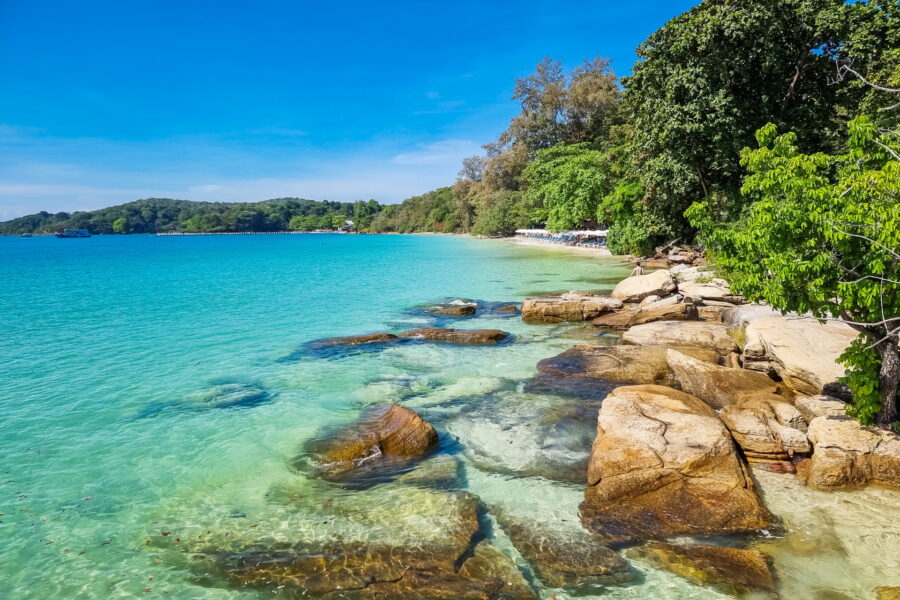
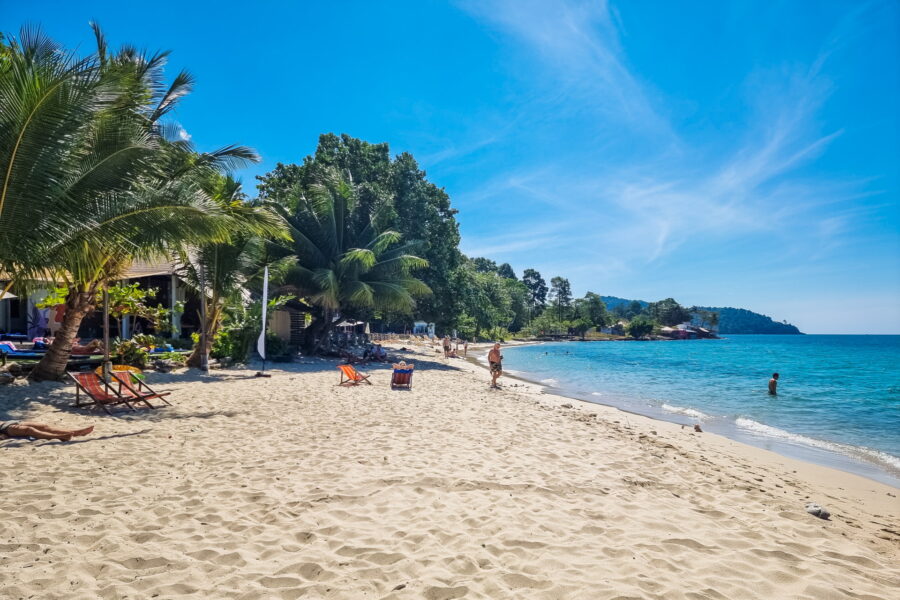
Pattaya
Why I Never Talk About Pattaya
Ko samet
The charm of Ko Samet: an island less than 3 hours from Bangkok
Chanthaburi
Namtok Phlio National Park: Nature and Discoveries in Chanthaburi
Chanthaburi: coastal walk between Kung Wiman and Chao Lao beaches
Trat
Trat: why explore this little-known region of Thailand?
Ko chang
Ko Chang: Guide to Choosing the Perfect Beach to Stay at
Ko Chang: 7 waterfalls to discover the whole island
Ko Mak
Ko Mak: a quiet and authentic island.
Ko Kood (Ko Kut)
Ko Kood (Ko Kut): an island still preserved
Ao Noi, a little corner of paradise in Ko Kood
Southern Thailand
This is clearly what makes Thailand a postcard image: white sand beaches, islands with turquoise waters, karst cliffs and coconut trees as far as the eye can see. But the South also has spectacular national parks, fishing villages, and a culture influenced by nearby Malaysia.
On the Andaman Sea side, we find the main destinations like Phuket, Krabi, Ko Phi Phi or, Koh Lanta, each with its own style. Further inside, the Khao Sok Park impresses with its dense jungle and its lake bordered by limestone peaks.
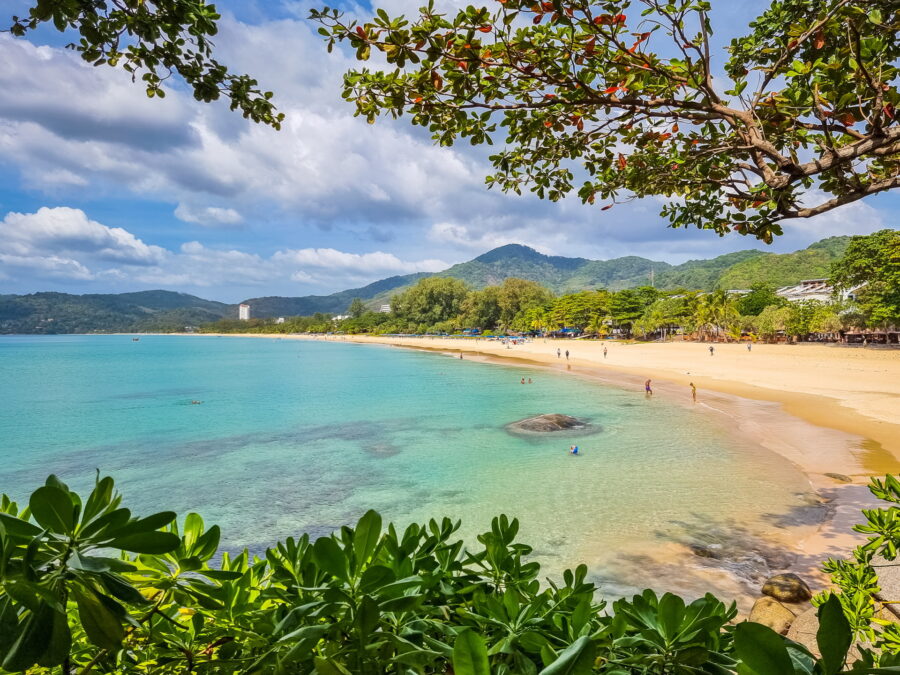
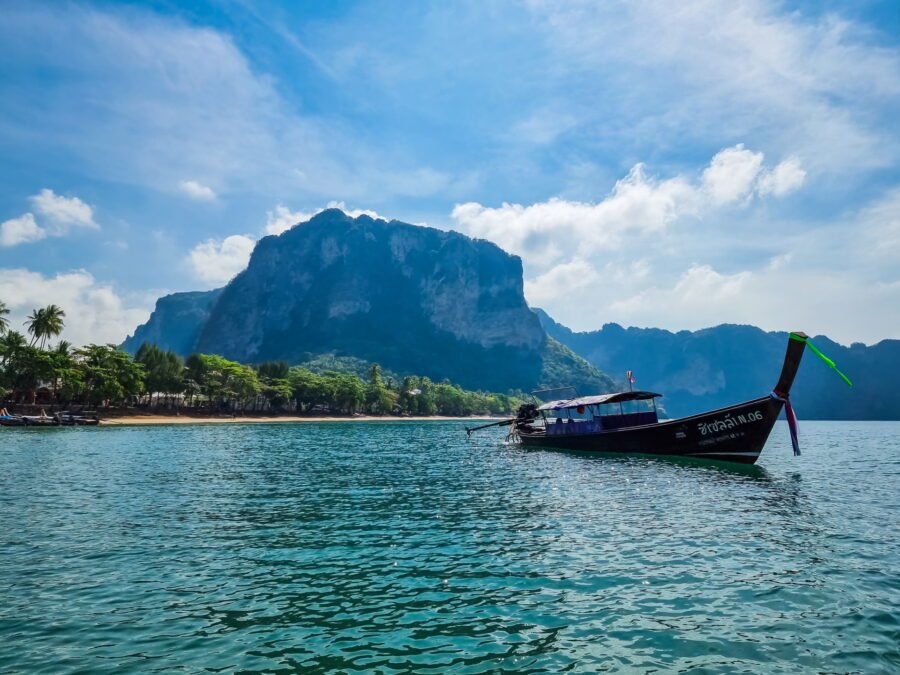
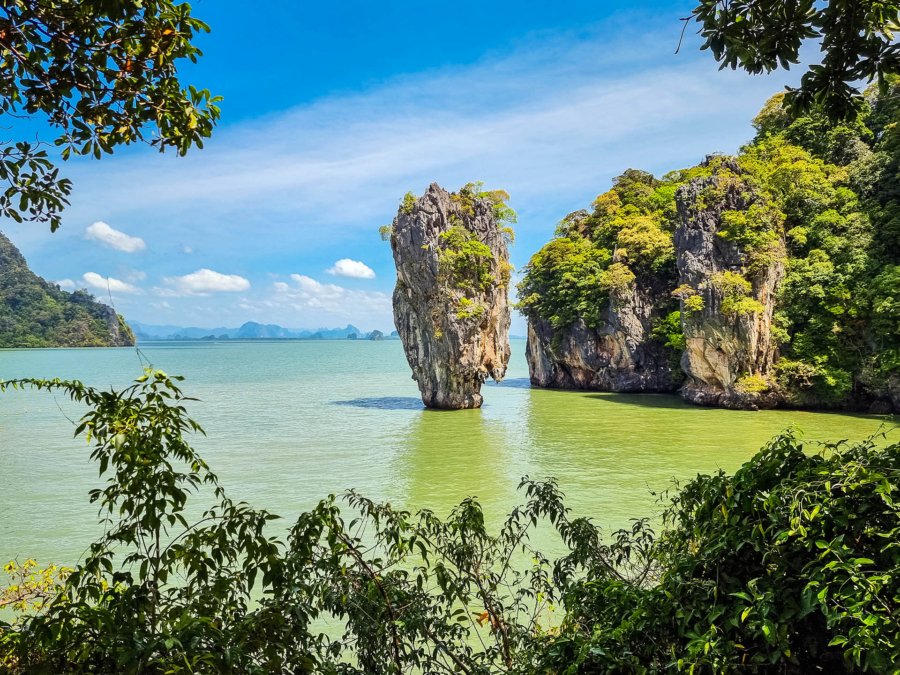
Phuket
Phuket: Guide to choosing the ideal beach to stay at
Phuket Town: a stroll through the colorful old town
Phuket: 5 viewpoints to explore the island differently
Krabi (Ao Nang/ Railey)
Krabi: Complete guide to must-see and must-do things
Ko Phi Phi
FUTURE
Koh Lanta
FUTURE
Khao sok
FUTURE
On the other side, on the Gulf of Thailand, Koh Samui, Ko Phangan and Ko Tao attract travelers in search of relaxation, nature, or diving spots. A concentration of spectacular landscapes and varied atmospheres.
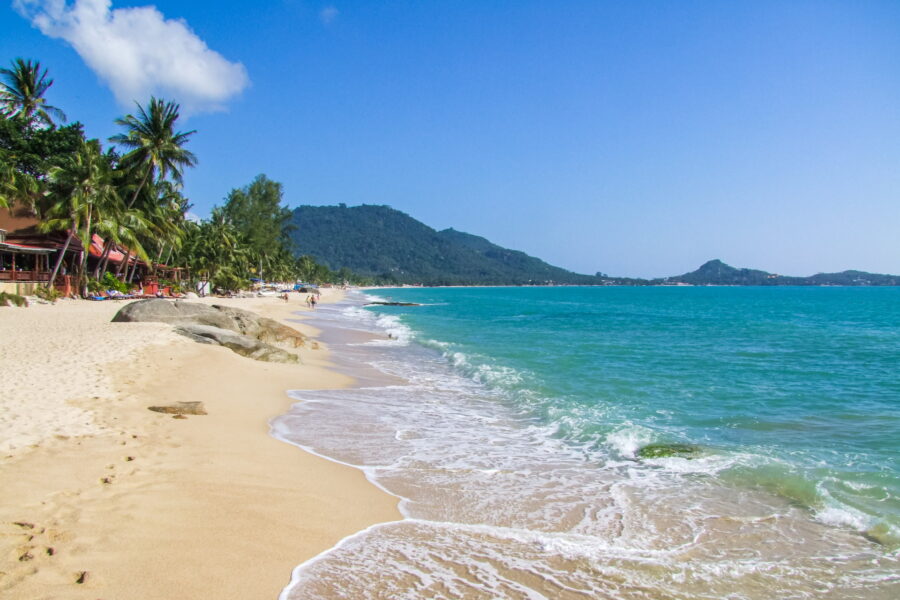
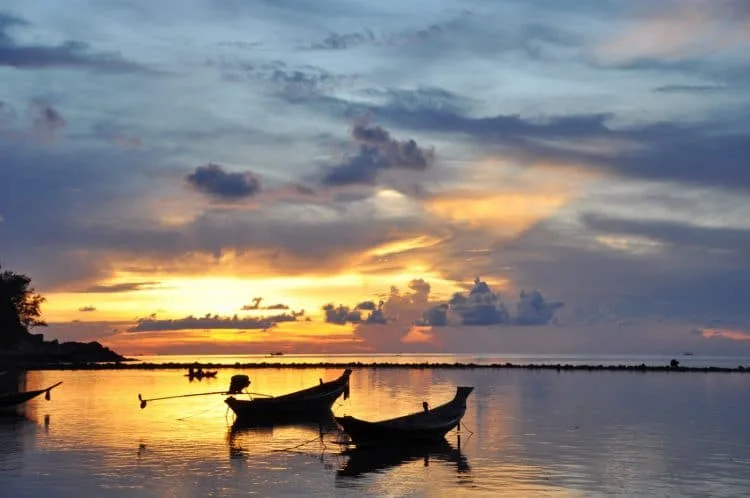
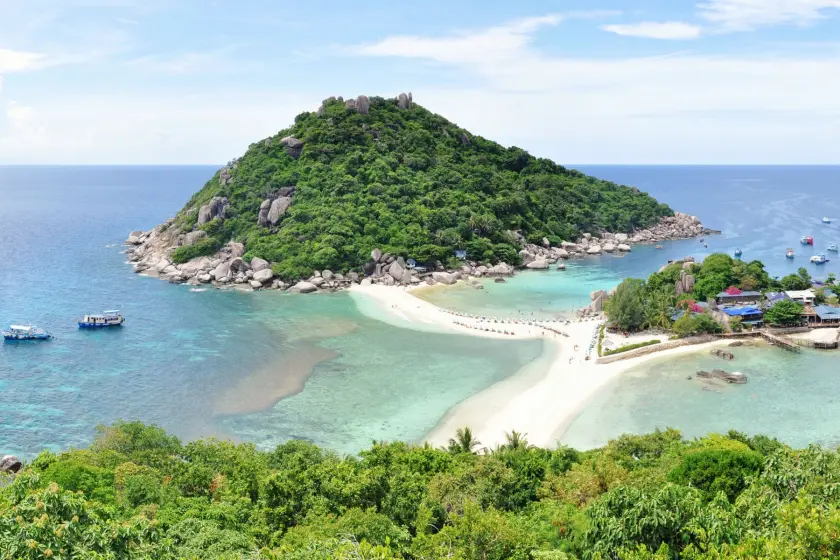
Ko Samui
FUTURE
Ko Phangan
FUTURE
Koh Tao
FUTURE
Surat Thani
FUTURE
Not sure when to travel? Here's a rundown of the seasons by region so you can better plan your trip according to your preferences.
When to go depending on the region?
In Thailand, the weather varies slightly from north to south. The dry season (Nov. to Feb.) is often highlighted, but it's not the only pleasant time to travel. Some regions are superb in summer, others quieter in the off-season. In short, there's no universally "perfect" time, but rather **periods that are more or less suitable depending on the area**.
Good to know: Although Thailand can generally be visited all year round, certain periods are less favorable depending on the region. In summary:
- The North is stormier in September-October
- The Andaman coast (Phuket, Krabi, etc.) often experiences heavy rains in September.
- In the Gulf of Thailand (Ko Samui, Ko Tao, etc.), the weather becomes more unstable between September and December.
Want to learn more about the weather?
I wrote a full article that details month by month the advantages/disadvantages to help you plan your itinerary according to your priorities: beaches, hikes, festivities, etc.
➜ [Thailand: When to go? Weather and advice month by month]
In the meantime, here is a quick overview to better understand when to leave according to geographical areas:
| the Region | Ideal period(s) | To know |
| Centre | Nov. to Feb. | Dry climate, pleasant for visiting Ayutthaya, Kanchanaburi or Bangkok. |
| March to August | Very hot from March to May, then rainy season but quite passable. | |
| North part | Nov. to Feb. | The first half of November is at its best. The cool season is ideal for hiking and cultural visits. |
| June to August | Often brief rains. Lush green landscapes, abundant waterfalls, superb mountain panoramas. | |
| Northeast (Isaan) | Nov. to Feb. | Dry and pleasant weather, perfect for exploring Khmer sites or natural parks. |
| May to August | End of the hot season, then planting of rice fields in July. | |
| East | November to May | Great time to enjoy the islands (Ko Chang, Ko Mak, etc.). Little rain, calm sea. |
| South (Andaman) | November to April | Dry season: ideal for Phuket, Krabi, Ko Lanta. Calm sea, easy excursions. |
| South (Gulf) | Jan. to Aug. | Very favorable for Ko Samui, Ko Tao, Ko Pha Ngan. Less exposed to the monsoon. |


